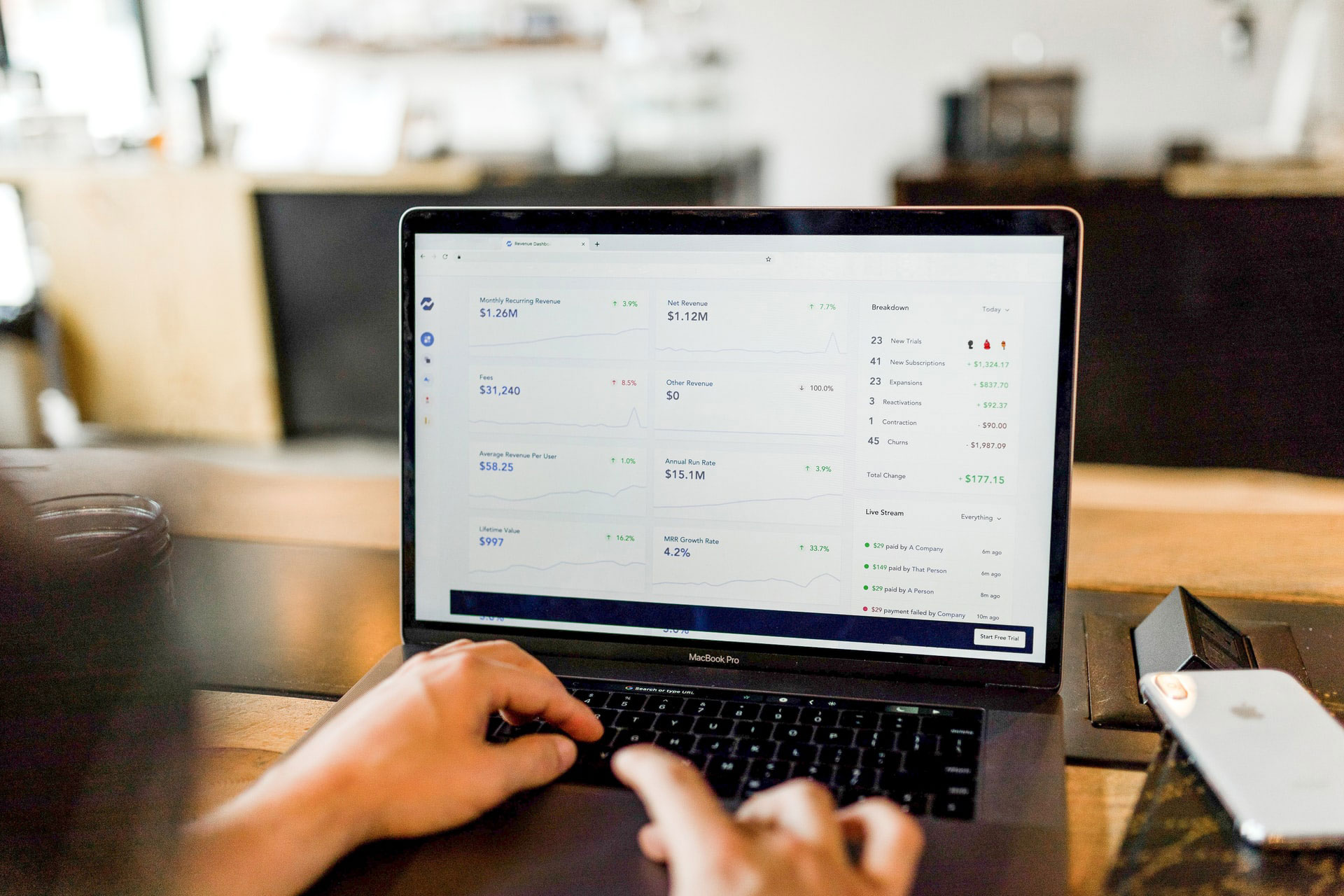FintechZoom.com | Your Gateway to Financial Insights
- Home
-
Stocks Updates
- News
-
Finance Tools
- Crypto Profit Calculator
- Savings Goal Calculator
- Compound Interest Calculator
- Currency Converter
- Tax Calculator
- Retirement Planner
- Net Worth Tracker
- Investment Portfolio Calculator
- Credit Card Payoff Calculator
- Monthly Budget Planner
- Mortgage Affordability Calculator
- Debt-to-Income (DTI) Ratio Calculator
- Fuel Cost Calculator
- Stock Return Calculator
- Loan EMI Calculator
- Latest Blogs
- Jobs Updates
How Online Banking Works: The Modern Guide to Safe, Smart Banking By FintechZoomOfficial.com
 How Online Banking Works: The Modern Guide to Safe, Smart Banking By FintechZoomOfficial.com
How Online Banking Works: The Modern Guide to Safe, Smart Banking By FintechZoomOfficial.comOnline banking is no longer a luxury—it’s the new standard. According to a 2024 report by Statista, over 78% of adults in the U.S. use some form of digital banking. That massive adoption shows how online banking works as a trusted method for managing finances in real time.
Table of Contents
- Why online banking is used more now than ever before
- What readers will find in this article
- Quick Takeaways
- Main functions offered through online banking
- How it adds safety, ease, and speed to finance tasks
- What Is Online Banking?
- Clear meaning of the term
- How it evolved from branch-based systems
- Who uses it today and why
- How Online Banking Works: Behind the Process
- Login and Access
- Banking Request
- Processing and Completion
- What You Can Do with Online Banking
- Check account balances
- View past transactions
- Pay utility or service bills
- Send and receive funds
- Deposit checks using your phone
- Set spending limits or financial goals
- Different Types of Online Banking Platforms
- Traditional Banks with Online Portals
- Online-Only Banks
- Fintech Platforms
- Why So Many Prefer Online Banking
- Round-the-clock availability
- Lower operational costs
- Fast transfers and confirmations
- Account control
- Risks and What to Watch Out For
- Needs internet access
- Security threats
- Limited physical services
- How It Stays Secure
- SSL encryption
- Two-factor authentication (2FA)
- Biometric login
- Real-time alerts
- Insurance and added safety tips
- Picking the Right Online Bank
- Compare fees
- Check app reviews
- Look at customer support options
- Explore added tools
- What’s Next for Online Banking?
- Real-time payments
- Smart automation
- Voice banking
- Open banking integrations
- Final Thoughts
- A complete review of how online banking works
- Your role in safe, smart banking
- Invite to share experiences with digital banking
- What does online banking mean for regular users?
- Can online banking fully replace traditional banking?
- Is it safe to use online banking on mobile devices?
- What is needed to start using online banking?
- How online banking works when transferring money?
- What features make online banking convenient?
- Can I use online banking while traveling?
- How do banks protect data in online systems?
- Is customer service available in online banking?
- Are there any fees linked with online banking?
- What happens if I forget my password?
- Do all banks offer online banking?
- Can I deposit checks through online banking?
- What’s the future of online banking?
- Why should I learn how online banking works?
Why online banking is used more now than ever before
More people now prefer digital banking over in-branch visits. With smartphones and high-speed internet, users expect instant access to funds. That’s how online banking works to meet expectations—offering fast access to accounts, real-time updates, and services without human delays.
What readers will find in this article
This article explains how online banking works in real terms. You’ll learn how systems process actions, how to stay secure, which platforms to consider, and what changes are coming soon. Whether you’re new to online banking or improving how you use it, this article gives practical answers.
Quick Takeaways
Main functions offered through online banking
To understand how online banking works, you should know its basic functions. From checking balances to scheduling payments, digital banking provides tools for nearly every financial task. These features offer both speed and convenience, which is why many users now avoid traditional banking.
Most people know you can check your balance online. But that’s just the beginning of how online banking works. You can also:
- View transaction history
- Pay bills directly
- Transfer money to friends or family
- Receive salary and income
- Access digital statements
- Lock your card or report fraud instantly
How it adds safety, ease, and speed to finance tasks
Using encrypted logins, alerts, and real-time tracking, banks make sure how online banking works is both safe and effective. You don’t wait days to see your spending. You don’t guess your balance. And you’re not limited by branch timings.
What Is Online Banking?
Online banking refers to any financial service offered over the internet. Whether accessed via mobile app or web portal, it removes the need for physical visits to the bank. Knowing how online banking works helps users take full advantage of available features and services.
Clear meaning of the term
To understand how online banking works, start with the basics: It refers to any banking service you can use via the internet. That means no need to visit physical branches. Instead, all core actions happen on an app or website provided by your bank.
How it evolved from branch-based systems
Years ago, banking meant standing in lines and signing forms. But over time, banks added web access, and then mobile apps. Today, some banks don’t even have branches at all. This evolution is key to how online banking works now—seamless, fast, and user-controlled.
Who uses it today and why
People of all ages now depend on it. Students use it to track spending. Freelancers get paid through apps. Business owners manage payroll. Seniors pay utility bills. No matter the user, how online banking works offers value in convenience, speed, and control.
How Online Banking Works: Behind the Process
This section outlines the typical flow of an online transaction. It begins with login, continues through processing the request, and ends with confirmation. Learning how online banking works step by step builds trust in the technology and systems involved.
Login and Access
Every session begins with logging in. This is the first step of how online banking works. Most banks now use a mix of passwords, PINs, biometrics, or two-step verification. This process ensures that only you can see or use your account.
Banking Request
After login, you choose what to do—view a statement, pay a bill, or send money. Your command goes through a secure system that understands the request. This clear flow is a major part of how online banking works efficiently.
Processing and Completion
Your bank receives the request and confirms everything: identity, amount, account details. If all checks pass, the action completes, and you get confirmation in seconds. This is where technology plays a huge part in how online banking works today.
What You Can Do with Online Banking
Online banking is not limited to traditional banks. There are also online-only banks and fintech apps, each with its own strengths. Understanding how online banking works across these platforms helps in choosing the right fit.
The list of actions possible through digital platforms keeps growing. Whether you’re paying bills, transferring money, or reviewing past transactions, it’s all part of how online banking works to simplify financial management for everyday users.
Check account balances
The most basic feature. You log in, and the current balance appears instantly. This shows how online banking works to keep you updated without needing to visit a branch or wait for a printed statement.
View past transactions
You can see a detailed record of every amount received or spent. This helps users understand spending habits and detect unusual activity. This is another example of how online banking works to support financial awareness.
Pay utility or service bills
Through auto-pay or manual entry, most online banking systems support bill payments. This reduces missed payments and late fees. It’s one of the most common ways how online banking works to save time.
Send and receive funds
Want to pay a vendor or split rent with a roommate? Transferring money is easy with just an account number or contact. This action defines how online banking works for personal and business needs.
Deposit checks using your phone
Mobile deposit lets users scan checks and deposit them with a few clicks. It removes the need for bank visits and speeds up access to funds. This tool shows how flexible how online banking works has become.
Set spending limits or financial goals
Many apps include budgeting tools. You can set monthly goals, track your progress, or get alerts. That’s part of how online banking works to help you build healthy money habits.
Different Types of Online Banking Platforms
Online banking is not limited to traditional banks. There are also online-only banks and fintech apps, each with its own strengths. Understanding how online banking works across these platforms helps in choosing the right fit.
Traditional Banks with Online Portals
Most big banks now offer full online features. You still have branch access, but most tasks are done online. This hybrid model is one way how online banking works for traditional customers.
Online-Only Banks
These banks don’t have buildings or staff branches. They offer low-fee, high-interest services through apps only. Knowing how online banking works here helps users adapt to 100% digital systems.
Fintech Platforms
Apps like Wise or Payoneer don’t replace banks, but they enhance services like global transfers. At FintechZoomOfficial.com, we review such tools to show readers exactly how online banking works in the wider fintech space.
Why So Many Prefer Online Banking
Ease of access, cost savings, and fast service explain why online platforms are becoming dominant. By grasping how online banking works, users can take advantage of benefits like faster transfers and real-time control over their accounts.
Round-the-clock availability
Unlike branches, online banking never closes. You can access your funds even at 3 AM. That’s a big reason why people want to know how online banking works.
Lower operational costs
No rent, no branch staff—so many online banks offer fewer or zero fees. These savings are a strong example of how online banking works in favor of the user.
Fast transfers and confirmations
Real-time updates mean no waiting for confirmation. Transactions are instant. That’s the speed of how modern online banking works.
Account control
Freeze your card. Set alerts. Change passwords. Update contact info. All from one screen. That’s the flexibility of how online banking works.
Risks and What to Watch Out For
Despite its advantages, digital banking comes with certain risks—especially around security and connectivity. Understanding how online banking works also means knowing what to avoid and how to protect your information.
Needs internet access
If your phone is dead or you have no signal, access may be limited. It’s one limitation in how online banking works, though offline options are expanding.
Security threats
Phishing emails, scam calls, or fake websites are common risks. Users must stay alert. Still, banks are improving security, and how online banking works includes fraud detection too.
Limited physical services
Need to deposit cash or get a printed check? Some online banks can’t help. These limits don’t change how online banking works digitally but may impact people with offline needs.
How It Stays Secure
Banks use encryption, two-factor authentication, and biometric logins to protect your data. This section explains how online banking works to keep information private and financial activity safe from threats.
SSL encryption
Every data packet is protected from the moment you click login. It’s core to how online banking works safely.
Two-factor authentication (2FA)
After entering your password, a code is sent to your device. This makes it harder for anyone to break in. It’s one of the ways how online banking works to protect access.
Biometric login
Fingerprint or facial scan adds security and speed. This also makes how online banking works user-friendly.
Real-time alerts
Get notified about every transaction instantly. This helps track activity and stop fraud. It’s a major feature in how online banking works today.
Insurance and added safety tips
Your money may be insured under national protection schemes (like FDIC in the U.S.). Also, avoid public Wi-Fi and use secure passwords. These habits strengthen how online banking works.
Picking the Right Online Bank
All banks are not the same. By reviewing fees, support services, and user tools, you can better understand how online banking works from one provider to another—and choose the right platform for your needs.
Compare fees
Before choosing a bank, compare hidden charges, transfer fees, and maintenance costs. This helps you get the best version of how online banking works for your needs.
Check app reviews
Good ratings often reflect smooth features and fewer bugs. If an app lags or crashes, it affects how well online banking works for you.
Look at customer support options
Live chat or call support matters when you need help fast. That’s a big part of how online banking works in practice.
Explore added tools
Some platforms include credit score tracking, investing dashboards, or saving rules. These tools show how powerful online banking works can become with the right provider.
What’s Next for Online Banking?

All banks are not the same. By reviewing fees, support services, and user tools, you can better understand how online banking works from one provider to another—and choose the right platform for your needs.
Real-time payments
With faster payment networks, money reaches instantly across accounts. That’s the future of how efficient online banking works.
Smart automation
Schedule payments, trigger savings, or automate budgeting. These functions will shape how online banking works tomorrow.
Voice banking
Control your bank with voice through Siri, Alexa, or Google. It’s the next step in how simple online banking works can become.
Open banking integrations
Third-party apps can link safely to your bank, giving more visibility. Open banking is changing how online banking works for users and developers alike.
Final Thoughts
Online banking is a powerful tool when used wisely. This final section ties together everything covered—from how online banking works on a daily basis to how users can maintain safety and control in the future.
A complete review of how online banking works
You’ve seen every step—from logging in to tracking transfers. That’s how modern online banking works across devices and providers.
Your role in safe, smart banking
While banks do their part, you also play a role: use strong passwords, watch your alerts, and bank only on trusted platforms.
Invite to share experiences with digital banking
Have you used an app recently to manage money? You’re already part of how online banking works today. Share your experience in the comments—we’d love to hear how you bank smarter.
What does online banking mean for regular users?
Online banking refers to services you can use through a website or app instead of going to a physical branch. You can check your balance, send money, pay bills, and track activity. It’s helpful for anyone with a smartphone or internet access. Learning how online banking works helps users stay in control of their money. It’s now a normal part of personal finance.
Can online banking fully replace traditional banking?
For many users, yes. Most daily tasks like transfers, payments, and account management can be done digitally. Still, some may prefer in-person help for rare or complex needs. That said, how online banking works covers most services people need. It’s flexible enough for both individuals and small businesses.
Is it safe to use online banking on mobile devices?
Yes, as long as you’re using trusted apps and secure Wi-Fi. Banks use security tools like encryption, fingerprint login, and real-time alerts. These features explain how online banking works to protect your money. Avoid public networks and always log out when done. Safety improves when users follow basic habits.
What is needed to start using online banking?
You’ll need an internet connection, a device, and an account with a bank that offers online access. After registering, you’ll create login details and may set up two-factor authentication. That’s the base of how online banking works for new users. It’s fast to start and easy to maintain.
How online banking works when transferring money?
After logging in, you choose a transfer option, enter the account details, and confirm. The system checks your balance and processes the request. Most banks complete this in seconds. This is a good example of how online banking works quickly. Some apps even let you save frequent recipients.
What features make online banking convenient?
You can do everything from checking balances to paying bills from one place. Scheduled payments, instant notifications, and card controls add more control. These are just some parts of how online banking works to save time. It puts daily banking in your pocket.
Can I use online banking while traveling?
Yes, online banking works in most countries with internet access. You can manage funds, view updates, or send money across borders. Some banks may block access for security, so let them know in advance. This shows how online banking works even on the go. A VPN may help in restricted regions.
How do banks protect data in online systems?
Banks use strong encryption, login verification, and alerts to protect access. Most apps also include timeout features if you stay inactive. These tools show how online banking works with user safety in mind. Banks also monitor suspicious activity. Your role is to keep passwords private.
Is customer service available in online banking?
Yes, many banks offer chat, email, and phone support built into their apps or sites. You can ask about charges, delays, or account issues directly. This is how online banking works to stay helpful without needing visits. Some platforms even offer AI chat for quick questions. Good service makes things smoother.
Are there any fees linked with online banking?
Some banks offer free online banking, while others may charge for transfers or account use. It depends on the provider. Checking terms helps you understand how online banking works with costs. Look for platforms that match your usage habits. Low-fee models are becoming common.
What happens if I forget my password?
You can reset it through the bank’s site or app, usually by email or SMS. Two-factor checks may be required before you set a new one. This system is part of how online banking works to recover access. Try not to reuse old passwords. Save the new one securely.
Do all banks offer online banking?
Most modern banks do, especially those in urban areas or with large customer bases. Online-only banks offer it by default. Knowing how online banking works can help you pick the right bank. Check their app reviews before signing up. Smaller banks may have fewer features.
Can I deposit checks through online banking?
Yes, many banks allow mobile check deposits through their app. You take photos of the front and back of the check and submit them. The funds may appear within one to two days. That’s how online banking works without needing a visit. It’s fast and widely used now.
What’s the future of online banking?
More tools like voice banking, automation, and open banking links are coming. These features will expand how online banking works across platforms. Users will see more personalized dashboards too. It’s moving toward simplicity without losing control. Updates happen fast in this space.
Why should I learn how online banking works?
Because it’s the core of how people handle money today. From salaries to savings, everything flows through these systems. Knowing how online banking works puts you in control and avoids mistakes. It also helps you catch fraud faster. And it saves time every week.














No Comments